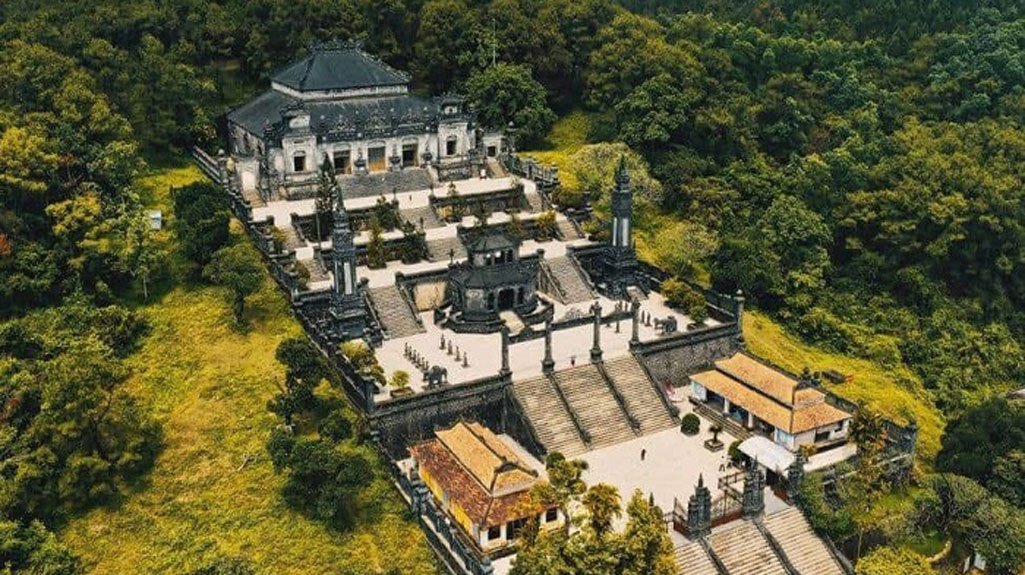Tomb of Khai Dinh is a royal mausoleum located in Hue city, Vietnam. It was built for Khai Dinh, the 12th emperor of the Nguyen dynasty, who ruled from 1916 to 1925. The tomb was completed in 1931, six years after Khai Dinh’s death.
Who is Khai Dinh King and why was the tomb built for him?
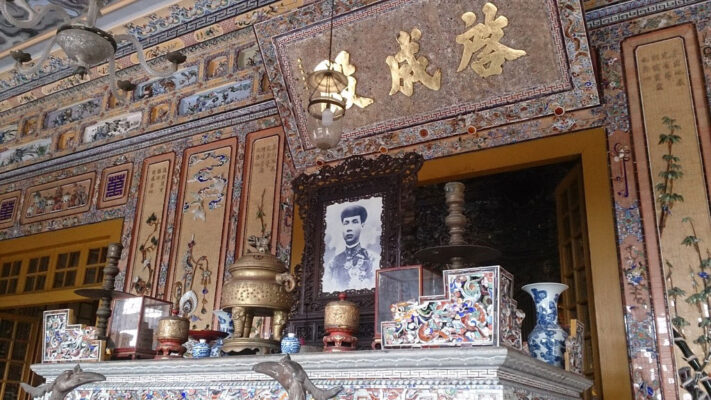
Khai Dinh was a controversial figure in Vietnamese history. During his reign as emperor, he became known for his pro-French policies, which were deeply unpopular with many of his subjects. He was also criticized for his extravagance and for levying high taxes on the Vietnamese people. Despite these criticisms, Khai Dinh was able to amass a great fortune, which he used to build his grand mausoleum.
Khai Dinh’s tomb is located in Hue, Vietnam, and is a blend of Vietnamese and European architectural styles. It is built on a hillside and is accessed via a steep staircase. The exterior of the tomb is adorned with intricate mosaics, which depict dragons and other mythological creatures. Inside the tomb, visitors can see a variety of decorative elements, including intricate carvings, colorful murals, and detailed statues. There is also a giant statue of Khai Dinh, which is made of bronze and is surrounded by offerings of fruit and flowers.
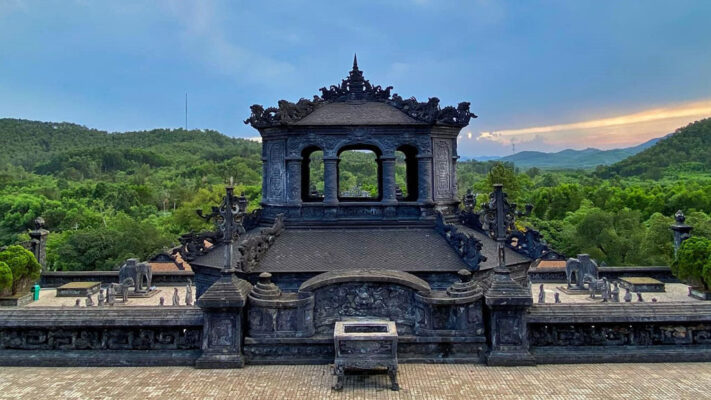
The architectural features of the tomb are a testament to Khai Dinh’s wealth and his desire to leave a lasting legacy. The tomb is an example of the extravagant architectural style that was popular during the Nguyen dynasty. Despite the controversy surrounding his reign, Khai Dinh’s mausoleum remains a popular tourist attraction and serves as a reminder of the country’s colonial past.
If you’re planning a trip to Hue, Vietnam, be sure to add Khai Dinh’s tomb to your itinerary. It is a beautiful and historically significant site that is well worth a visit for anyone interested in Vietnamese history and culture. While there is no strict dress code, visitors are recommended to dress modestly out of respect for local customs and culture. It is also important to be mindful of your surroundings and not to touch any of the artifacts or decorations. Photography is allowed inside the tomb, but flash photography is not permitted. Finally, visitors should wear comfortable shoes as there are many stairs to climb when exploring the site.
What is the history behind the Tomb of Khai Dinh King?
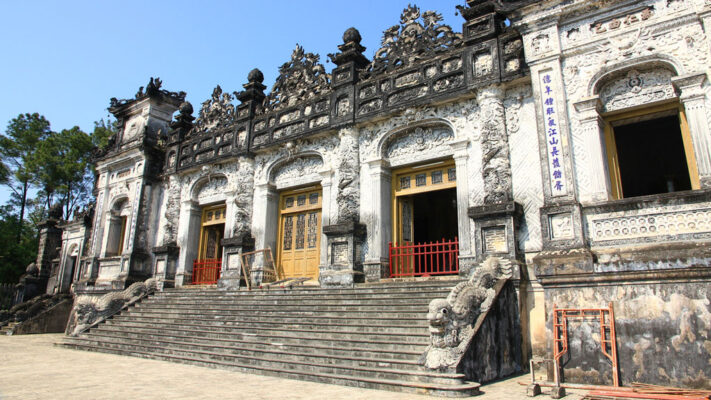
Khai Dinh was known for his pro-French policies, which made him unpopular with many of his subjects. He was also criticized for his extravagance and for levying high taxes on the Vietnamese people. Despite this, he was able to amass a great fortune, which he used to build his mausoleum.
Khai Dinh’s reign was marked by significant changes in Vietnam. During his reign, the country was still under the control of the French, who had colonized Vietnam in the mid-19th century. Khai Dinh’s pro-French policies were seen as a betrayal by many Vietnamese people who wanted to see their country gain independence from France.
What are the architectural features of the Tomb of Khai Dinh?
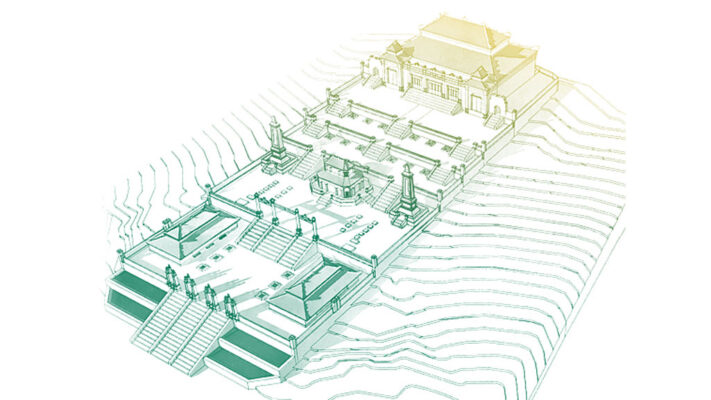
The Tomb of Khai Dinh is a Vietnamese imperial tomb located in Hue. It features a blend of European and Eastern architectural styles, including a long staircase leading up to the entrance, a courtyard with stele pavilions, and a main hall with a bronze statue of Khai Dinh. The interior of the tomb is ornately decorated with colorful glass and ceramic tiles and features a mosaic dragon made of broken glass bottles.
Discover the blend of European and Eastern architectural styles at the Tomb of Khai Dinh in Hue, Vietnam.
The mausoleum is a blend of Vietnamese and European architectural styles. It is built on a hillside and is accessed via a steep staircase. The exterior of the tomb is adorned with intricate mosaics, which depict dragons and other mythological creatures.
Inside the tomb, visitors can see a variety of decorative elements, including intricate carvings, colorful murals, and detailed statues. There is also a giant statue of Khai Dinh, which is made of bronze and is surrounded by offerings of fruit and flowers.
The statue of Khai Dinh in the Tomb of Khai Dinh is one of the main attractions of the site. Made of bronze, the statue is located in the main hall of the tomb and is surrounded by offerings of fruit and flowers. The statue is notable for its size and intricate details, which include a detailed depiction of the emperor’s traditional attire. Visitors to the tomb can admire the statue and learn more about Khai Dinh’s life and legacy.
The architectural features of the tomb are a testament to Khai Dinh’s wealth and his desire to leave a lasting legacy. The tomb is an example of the extravagant architectural style that was popular during the Nguyen dynasty.
Travel guide for visiting Khai Dinh tomb
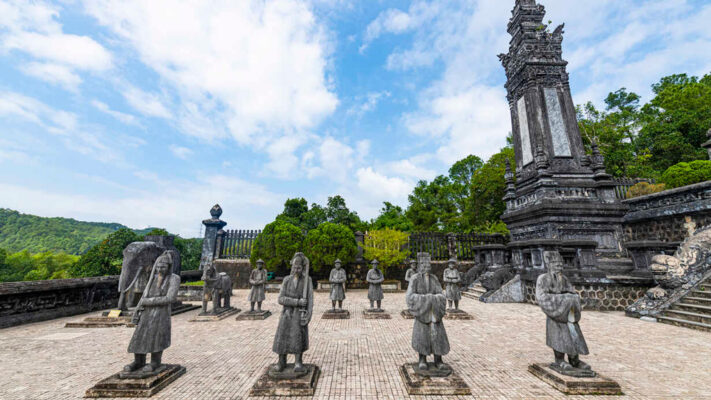
What is the entrance fee for the tomb?
If you are planning to visit the Tomb of Khai Dinh, there are a few things you should know. The entrance fee is 150,000 VND (approximately USD 6.50) per person.
What are the opening hours of Khai Dinh king’s tomb?
Tomb of Khai Dinh is open to visitors every day from 7:00 a.m. to 5:30 p.m. These hours provide ample time for tourists to explore the tomb and admire its intricate architectural features and historical significance. It is important to note that the tomb is a popular tourist destination, and it is advisable to arrive early in the day to avoid the crowds. Additionally, visiting in the morning is an ideal time as the weather is cooler, and the natural light is perfect for taking photographs.
What is the best time of day to visit Khai Dinh’s tomb?
When you visit the tomb, it’s best to go in the morning. This time of day has several advantages. First, the weather is cooler and more comfortable, so you can relax and enjoy your visit. Second, there are usually fewer people around, so you can take your time and appreciate all the details. Plus, the morning light often highlights different features of the tomb’s design, giving you a unique perspective that you won’t get at other times of the day. So, if you want to have the best possible experience, make sure to plan your visit for the morning hours!
Are there any restrictions on photography at the tomb?
Photography is allowed inside the tomb, but there are a few restrictions. Flash photography is not allowed, and visitors are asked to be mindful of their surroundings and not to touch any of the artifacts or decorations.
Is there a dress code for visitors to the tomb?
Certainly, visitors to the Tomb of Khai Dinh are recommended to dress modestly out of respect for the historical and cultural significance of the site. While there is no strict dress code, it is advised to avoid wearing revealing clothing such as shorts, tank tops, or skirts above the knee. This is particularly important as the tomb is a religious site and it is important to show respect for local customs and culture.
It is worth noting that the weather in Hue can be hot and humid, so visitors may want to dress in lightweight and breathable clothing. Loose-fitting clothing is also a good option to ensure comfort while exploring the tomb. Additionally, visitors should wear comfortable shoes as there are many stairs to climb when exploring the site.
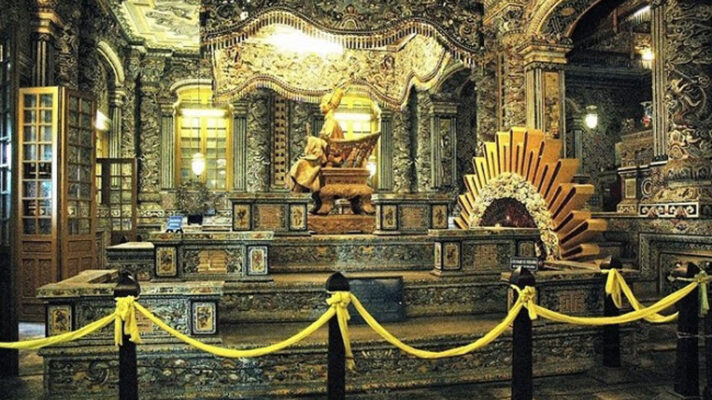
How do I get to Khai Dinh Mausoleum?
To get to the Tomb of Khai Dinh, you can take a taxi or hire a motorbike taxi from Hue. The journey takes approximately 30 minutes and offers stunning views of the surrounding countryside. The area is known for its picturesque landscapes, with rolling hills and lush vegetation. As you make your way toward the tomb, you will pass by quaint villages and local markets, where you can try traditional Vietnamese delicacies and engage with friendly locals.
Once you arrive at the tomb, you will be struck by its intricate architecture and ornate decorations.
The tomb is a testament to the skill and craftsmanship of the artisans who built it, with intricate carvings and beautiful mosaics decorating every surface.
Inside, you can explore the various chambers and learn about the life and legacy of Khai Dinh, the emperor who commissioned the tomb. Overall, the journey to the Tomb of Khai Dinh is a must-see experience for anyone visiting Hue, offering a glimpse into the rich history and culture of Vietnam, as well as the natural beauty of the region.
In conclusion, the Tomb of Khai Dinh is a beautiful and historically significant site that is well worth a visit for anyone interested in Vietnamese history and culture. The tomb is a reflection of the Nguyen dynasty’s extravagant architectural style and is a reminder of the country’s colonial past. Despite Khai Dinh’s controversial policies, his mausoleum remains a popular tourist attraction in Vietnam and a testament to his desire to leave a lasting legacy. If you’re planning a trip to Hue, be sure to add the Tomb of Khai Dinh to your itinerary.

